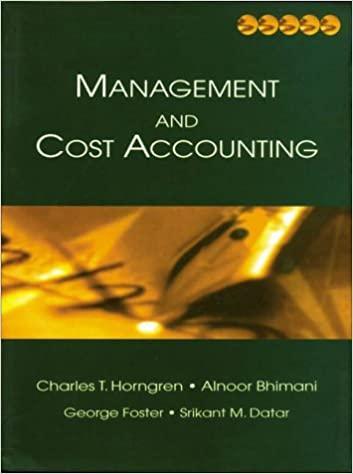Kim Mitcheil, the new credit manager of the Vinson Corporation, was alarmed to find that Vinson selis on credit terms of net 90 days while industry-wide credit terms have recently been lowered to net 30 days, On annual credit sales of $2.56 miltion, Vinson currently averages 95 days of sales in accounts recelvable. Mitchell estimates that tightening the credit terms to 30 days would reduce annual sales to $2,435,000, but accounts receivable would drop to 35 days of sales and the savings on investment in them should more than overcome any loss in profit. Assume that Vinson's variable cost ratio is 70%, taxes are 40%, and the interest rate on funds invested in recelvables is 25%. The data has been collected in the Microsoft Excel Online file below. Open the spreadsheet and perform the required analysis to answer the questions above. Assuming a 365-day year, calculate the net income under the current policy and the new policy. Do not round intermediate calculations. Round your answers to the nearest dollar: Current policy: $ New policy: $ Should the change in credit terms be made? \begin{tabular}{|c|c|c|c|c|} \hline Firm's current credit terms, net & 90 & days & & \\ \hline Industry-wide credit terms, net & 30 & days & & \\ \hline Discounts & \$o & & & \\ \hline Bad Debt Losses & \$0 & & & \\ \hline Firm's variable cost ratio & 70.00% & & & \\ \hline Tax rate & 40.00% & & & \\ \hline Interest rate on funds invested in receivables & 25.00% & & & \\ \hline Days in year & 365 & & & \\ \hline & & & & \\ \hline Current Credit Pollicy: & & & & \\ \hline Annual credit sales & $2,560,000 & & & \\ \hline Days sales outstanding, DSO & 950 & days & & \\ \hline \multicolumn{5}{|l|}{\begin{tabular}{l} New Credit Policy, Tighten to \\ Industry-Average Credit Terms: \end{tabular}} \\ \hline Annual credit sales & $2,435,000 & & & \\ \hline \multirow[t]{2}{*}{ Days sales outstanding, DSO } & 35 & days & & \\ \hline & .. & & & \\ \hline Changing Credit Policy Analysis: & \begin{tabular}{l} Projected Income \\ Statement Under \\ Current Credit Policy \end{tabular} & & \begin{tabular}{l} Ellucui \\ Credit \\ Policy \\ Change \end{tabular} & \begin{tabular}{l} Projeced Income \\ Statement Under New \\ Credit Policy \end{tabular} \\ \hline Gross sales. & $2,560,000 & & $125,000 & $2,435,000 \\ \hline \begin{tabular}{l} Gross sales \\ Discounts \end{tabular} & 0 & & 0 & 0 \\ \hline Net sales & & & & \\ \hline Variable costs & & & & \\ \hline Profit before credit costs and taxes & & & & \\ \hline Credit-related costs: & & & & \\ \hline Cost of carrying receivables & & & & \\ \hline Bad debt losses & 1 & & 0 & \\ \hline \end{tabular} \begin{tabular}{|c|c|c|c|c|c|c|} \hline & A & B. & c & E & F & G \\ \hline 26 & Credit-related costs: & & & & & \\ \hline 27 & Cost of carrying receivables & & & & & \\ \hline 28 & Bad debt losses & 0 & 0. & & 0 & \\ \hline 29 & Profit before taxes & & & & & \\ \hline 30 & Taxes & & & & & \\ \hline 31 & Net income & & & & & \\ \hline 32 & & & & & & \\ \hline 33 & Should the change in credit terms be made? & & . & & & \\ \hline 34 & & & & & & \\ \hline 35 & Formulas & & & & & \\ \hline 36 & Changing Credit Policy Analysis: & \begin{tabular}{l} Projected Income \\ Statement Under \\ Current Credit Policy \end{tabular} & \begin{tabular}{c} Eftect of \\ Credit \\ Policy \\ Change \end{tabular} & & \begin{tabular}{c} Projeced Income \\ Statement Under New \\ Credit Policy \end{tabular} & \\ \hline 37 & Gross sales & =B13 & =F21B21 & & =B17F & \\ \hline 38 & Discounts & =$B$5 & =F22B22 & & =$B$5 & \\ \hline 39 & Net sales & \#N/A & HN/A & & \#N/A & \\ \hline 40 & Variable costs & \#N/A & \#N/A & & \#N/A & \\ \hline 41 & Profit before credit costs and taxes & \#N/A & HN/A & & #N/A & \\ \hline 42 & Credit-related costs: & & & & & \\ \hline 43 & Cost of carrying receivables & #N/A & \#N/A & & \#N/A & \\ \hline 44 & Bad debt losses & =$B$6 & =F28B28 & & =$B$6 & \\ \hline 45 & Profit before taxes & \#N/A & HN/A & & \#N/A & \\ \hline 46 & Taxes & \#N/A & \#N/A & & HN/A & \\ \hline 47 & Net income & \#N/A & HN/A & & \#N/A & \\ \hline 48 & & & & & & \\ \hline 49 & Should the change in credit terms be made? & HN/A & & & & \\ \hline \end{tabular}









